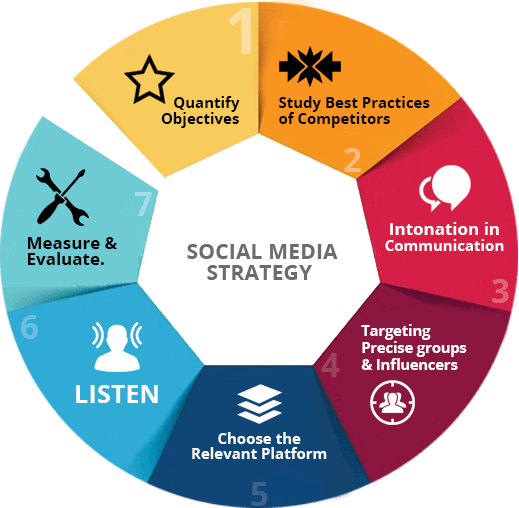How to create your social media strategy in seven steps – StartupSmart
Having a strategy is the first step to navigating social media successfully.
Here’s a simple step-by-step plan of attack to get your social media strategy in place:
1. Tactics and Strategy
Strategically, what remarkable content will you publish? Keep in mind your ideal customer and create strategic content that is specifically aimed at solving their problems. This way you’ll earn your readers’ trust and they’ll be more likely to share your content and recommend you.
Tactically, you must decide which social networks you want to use. It will depend on who your ideal customer is, but the popular ones are Facebook, Twitter, YouTube and LinkedIn, and the new, fast growing ones are Pinterest and Instagram.
2. Watching
Social media operates in real-time, so you need an internal ‘champion’ who watches and listens to what is being said about your organisation on the web. There are good free monitoring tools like Google Alerts and Hootsuite and you can access these from a smartphone, so your finger can always be on the pulse.
3. Emergency
What happens in the case of an emergency? There are usually two types: a negative comment and a crisis.
Unless a negative comment is malicious or offensive, I strongly advise you don’t delete it. Certainly respond to the comment and give your side of the story but deleting a negative will simply throw fuel on the fire. Remember having a few negative comments with sincere replies shows you are human and you are seen as more trustworthy.
In a crisis situation, like a scandal in the press, you need to know who will respond and represent the company. This person should be decided upon before any crisis hits. Hopefully it never happens but just so you’re prepared, here’s a free social media guidelines template that you may find useful.
4. Employees
Decide who in your organisation and which suppliers will have access to your social media accounts and who is allowed to comment on your behalf.
5. Technology
Once you’ve decided which social media platforms you’re planning to use, I suggest setting up a profile in each, even if it’s just to reserve your page and URL. There may be a company overseas with the same name as yours, so you want to be first in to reserve your name!
6. Success
It’s important to define why you’re getting involved in social media in the first place. I urge you to keep your business objectives in mind and not to get obsessed with vanity metrics like followers, fans or likes. It’s better to have a small audience of interested, potential buyers than it is to have a huge disinterested following.
Track who in your social media community go on to become paying customers because, since you’re running a business, it’s great to know that you’re getting an actual return on your time and money.
7. Content publishing schedule
It’s worth getting your social media strategy right before you start, because it will help provide your framework moving forward. And it allows you to keep your focus for content publishing.
The people who get the best results with social media plan out what they’ll be publishing and how frequently. And then have a system for holding themselves accountable to producing and sharing their content.
The only secret for being successful in social media is practice and discipline. Keep practising creating content and the quality will improve over time. Then just keep the discipline going to do it regularly. Most people who say social media doesn’t work give up way too soon.
The opportunities are huge, and I wish you every success with social media!
If you’ve found this article useful, I’ve released a Social Media Planning Template which is free download on my website.

